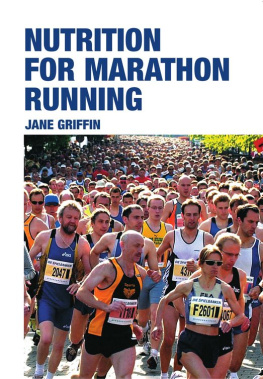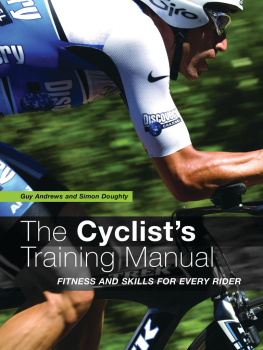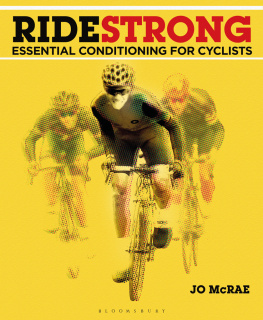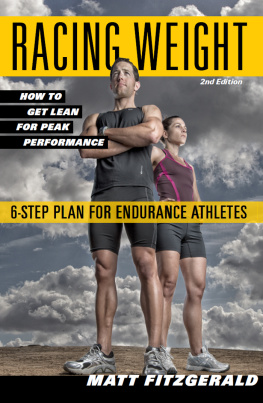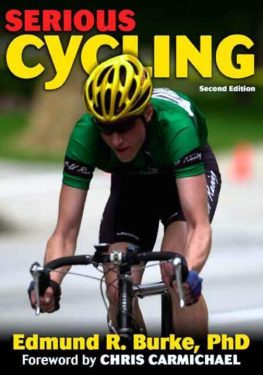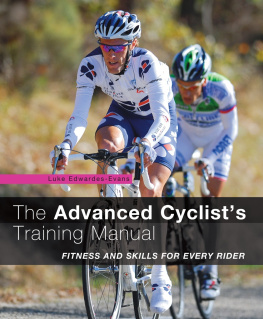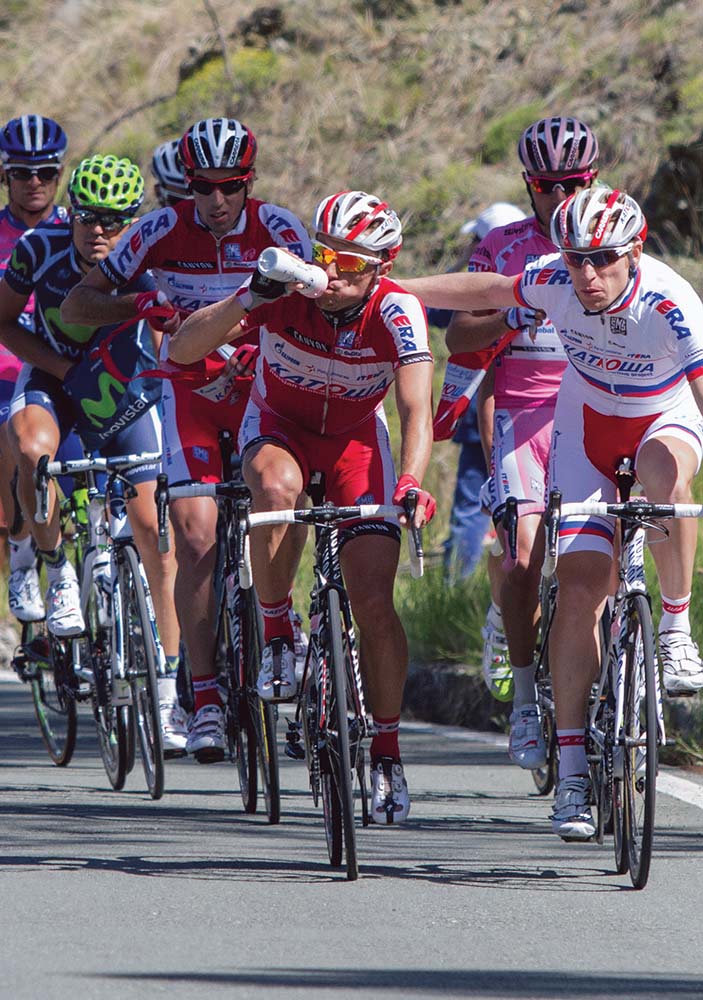First published in 2014 by
The Crowood Press Ltd
Ramsbury, Marlborough
Wiltshire SN8 2HR
This e-book first published in 2014
www.crowood.com
Jane Griffin 2014
All rights reserved. No part of this publication may be reproduced or transmitted in any form or by any means, electronic or mechanical, including photocopy, recording, or any information storage and retrieval system, without permission in writing from the publishers.
British Library Cataloguing-in-Publication Data
A catalogue record for this book is available from the British Library.
ISBN 978 1 84797 843 1
Acknowledgements
To my husband Chris for his love, support, encouragement and wise words not to mention the endless mugs of tea and coffee and the evening meals he produced while I shut myself away in my study.
A very big thank-you must go to Nigel Mitchell, the Head of Nutrition at British Cycling/Team Sky. On a trip to the Velodrome in Manchester, we sat watching the top cyclists in the country train as Nigel told me about the Tour de France and the nutritional requirements generally of elite cyclists, both in training and in races.
Another thank-you goes to the Dairy Council for giving me permission to reproduce the diet plan which appeared in their publication Nutrition for Cyclists the Milk Race.
INTRODUCTION
In the 2014 Annual Report of the Chief Medical Officer, Professor Dame Sally Davies said that while many people think cycling is dangerous because we hear about deaths on the road, cycling is usually a safe and healthy thing to do but the benefits dont make the headlines. The British Medical Journalpublished an article in February 2014 entitled London bike hire has positive impact on health. The researchers from the medical school in Cambridge investigated to see if the physical activity of cycling outweighed the risks of road traffic accidents, collisions and inhalation of polluted air. The results showed the greatest benefit was to older users (over 29) and particularly to men but also women.
Cycling, rather like running, is a simple sport! A runner needs a pair of decent running shoes and a water bottle; a cyclist needs a bike and a water bottle. Those are the basics; of course there can be many more add-ons, such as special clothing, shoes and gadgets, but it is not a complicated sport. A cyclist can go out alone, or with the family, or cycle with a friend, a neighbour or a cycling club. A cyclist can go out for a long ride or just a short ride.
As a sport, cycling has blossomed in recent years, no doubt in part because of the success of British Cycling at events such as the Olympics and the Tour de France. Long may this enthusiasm for cycling continue!
CHAPTER 1
NUTRITION BASICS
Cyclists rely on what they eat and drink every day to supply all their energy and nutrient requirements. The one exception to this is vitamin D, which the body can make by the action of sunlight on bare skin. The need for a special diet is therefore very small for most people and cyclists who go out on their bikes regularly should certainly be making sufficient vitamin D as long as enough skin is exposed! So what does the diet have to provide to keep the cycling body fit, healthy and stored with enough energy to meet each days requirements?
The body needs a regular supply of water, energy (calories), carbohydrate, fat and protein, vitamins and minerals. Requirements for health and well-being can easily be met by a varied diet in other words, one that contains lots of different foods and drinks. For most people, problems arise not so much because of a scarcity of food (as happens in times of famine through crop failure or over-population) but rather through intakes that are habitually greater than requirements. An advantage of taking part in regular exercise such as cycling means that cyclists need to eat and enjoy more food than sedentary individuals, while still being able to maintain a healthy weight for their sport. However, this does not mean they have an open invitation to eat anything (fast foods, for example) or to eat as much as possible at every meal. Achieving the right quality, quantity and variety of food and fluids consumed on a daily basis is the nutritional key to remaining healthy and maximizing cycling performance.


